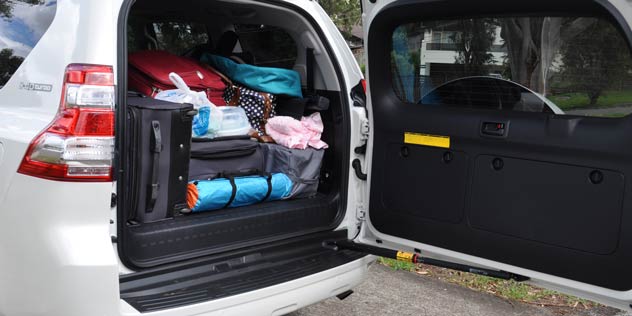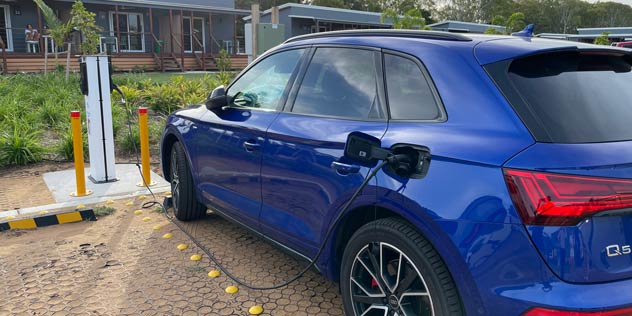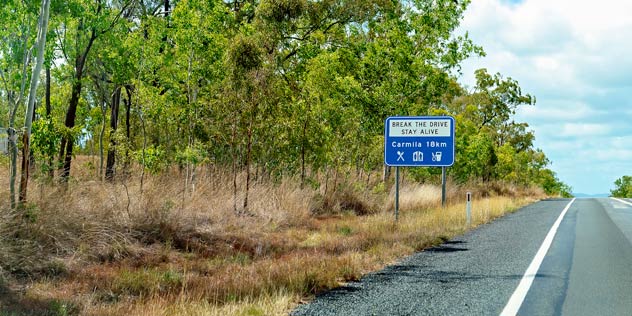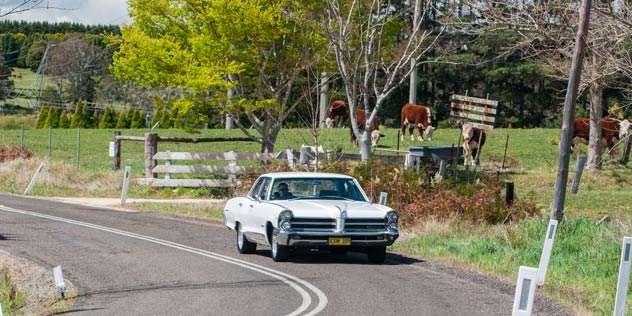
While most of us go on holidays from time to time, we so often breeze past points of interest or pull into a service centre rather than visiting a café in a country town. Only a road trip lets you experience the real Australia up close and in detail.
A real Aussie road trip is all about getting into your car and driving to places you’ve never been or stopping at the places you’ve always wanted to stop. It’s about experiencing unforgettable landscapes and meeting people from different walks of life. And it’s about the love of driving.
But an extended road trip can be daunting, especially if you’ve never organised one before. Here’s a step-by-step guide to planning a successful Australian road trip.
A road trip, by definition, implies exploring multiple destinations as opposed to driving to a single destination and putting down roots for a week. But where should those multiple destinations be?
Whether you’re a seasoned holidaymaker or just starting out, NRMA’s Trip Planner is a powerful way to kick-off your ‘blue sky’ thinking. Simply punch in your origin and potential destination, and it will provide a route with possible NRMA parks to stop along the way, as well as inspiration for activities while you’re on the road.
Google Maps is another free, invaluable resource. Perhaps you’ve heard good things about a town – Bellingen, say. Punch ‘Bellingen’ into Google Maps (preferably on your PC as the web browser version has superior functionality) and in an instant it will show you where the town is, its boundaries, a brief run-down on its heritage and attractions, links to nearby accommodation, and a selection of photos.
If you like the look of your chosen town, you can then begin to build a route between it and where you live. Dual-carriage motorways do not make for an interesting road trip (see point 10 below), so look to divert onto highways and byroads whenever possible – but keep in mind the further you stray from regional centres, the more accommodation options will dwindle.
Most regional towns have a website with extensive information or a tourism office that will be pleased to assist you over the phone or in person.

This might seem cold-blooded and lacking in adventurous spirit, but unless you’re towing a caravan and meandering intentionally, good planning is the backbone of a happy and successful road trip. There’s a reason travel agents create itineraries for their clients.
Knowing where you need to be and at what time, how long it will take to get there, and how much everything will cost when you arrive takes much of the stress out of a road trip. You can always wing it if you find you have spare time and spare cash on any given day, but an itinerary provides a reassuring framework. Again, the NRMA’s Trip Planner is another excellent go-to here.
The three main costs of a road trip are accommodation, food and fuel. Setting a realistic budget for these will ensure you don’t end up missing out on that glow-worm tour or day at Dreamworld with the family because the purse strings are too tight.
What you spend on the road trip basics will vary depending how lavish you want your journey to be. If you camp at every destination or stay in budget motels it will be a sight cheaper than resting your head at high-end hotels and farmstays. Eating every meal at a café or restaurant is a sure way to burn through your savings, while packing tubs of cereal for breakfast and bread and condiments for lunch will keep food expenses low.
It’s harder to limit fuel costs – they are what they are – but using the My NRMA app to find the cheapest petrol or diesel in a particular area can help.
What about a fly-drive road trip? Upside, you’re not squandering five valuable leave days getting to Perth or Darwin. Downside, it’s the opposite of cheap – in addition to airfares, you’re looking at daily car hire and fuel costs. Driving your own car is always the more affordable option assuming you have the time and patience.
This used to be quite the headache pre-internet, but researching and booking places to stay at multiple destinations can now be a morning’s work if you have clear destinations and accommodation types in mind.
If you’re travelling mid-week and outside school holidays, you can probably fly by the seat of your pants and find a vacancy wherever you choose to stop for the night. But do remember that arriving in town at 4pm and discovering every hotel, motel and holiday park is booked out is an excellent way to ruin a road trip.

The main difference between a road trip and a holiday is the number of times you have to pack and unpack. If you’re staying at a beach house for a week, it makes sense to fill your car to bursting with bikes and boogie boards and fishing rods. If you’re staying at three or four locations over the course of a week, playing ‘luggage Tetris’ every time you need to move on gets old fast.
Tootling from town to town between Sydney and Merimbula is not the same as driving from Sydney to Tibooburra or crossing the Nullarbor Plain. Long journeys into remote areas require additional supplies for safety and convenience, not least a healthy provision of drinking water, a jerry can of fuel, and a satellite phone. And if you’re heading into an alpine region during winter, make sure you pack tyre chains and know how to fit them.
Modern cars don’t break down much… provided they’re looked after properly. Taking a long road journey in a vehicle that hasn’t been serviced regularly is asking for trouble. Sustained high speeds in high temperatures – pretty much any Aussie road trip conducted between October and March – will soon expose an engine’s frailties. So have your vehicle serviced before you leave.
Fewer and fewer new cars have a proper spare tyre. If yours does, make sure it’s in good nick – that means it’s no more than five years old, has plenty of tread on it, and is inflated to the manufacturer’s recommended pressure. A space saver spare is fine in most cases (but they’re only rated for 80km/h and that means a 200km journey to the nearest town will take at least 2.5 hours). Same for tyre repair kits – they’re only intended as a temporary measure. If you plan to go remote, a vehicle without a proper spare tyre is inadvisable at best and dangerous at worst.

Provided you’re not heading too far outside the established regional centres, finding a petrol station won’t be an issue. If you’re travelling in an EV or bound for a more isolated area, however, be sure to research your options for filling or charging up beforehand. While NRMA patrols are friendly people, waiting on the side of the road for one to arrive won’t be a highlight of your road trip.
Punching a route into Google Maps will give you an accurate travel time, but be aware this is the absolute minimum and assumes you won’t even pause for a toilet break or to stop, revive, survive. Stops are often longer (especially if you divert from the highway to have lunch in a small town) and more frequent than you imagine. That goes double when travelling with young children, who often have poor bladder management. Time has a habit of getting away, and the last thing you want is to roll up to your guided tour half an hour late or fret about getting to the holiday park before reception closes.

I’ve been banging on about this for 15 years or more and it’s as true now as it was the first time I wrote it. Major highways and motorways are tremendous for funnelling cars long distances in a short time and absolute poison for a memorable road trip. Many coastal highways bypass everything. These days you can pretty much drive from Sydney to the Gold Coast without ever passing through a town.
Tacking inland from Australia’s metro areas and seaside hotspots will ensure you encounter remote highways, back roads, and interesting locales.

While ‘car enthusiast’ conjures up images of track days, club meets, and someone tinkering under a bonnet, touring is its own kind of car enthusiasm. Traversing quiet country roads on a gloriously sunny day can be just as memorable as the hot air ballooning or the wildlife encounters or the time spent getting to know colourful characters in a pub.
I’ll never forget crossing quaint timber bridges between Bermagui and Tathra on the NSW south coast, rolling for hours through the NSW outback’s Martian landscapes, driving cliffside with limitless sea-views in far north Queensland, cruising the sweeping bends of the Snowy Mountains Highway in the dead of winter, or encountering eccentric border towns along the Murray Valley Highway’s river-led wanderings.
Wherever you go, make sure your road trip incorporates breathtaking scenery and driving pleasure.
These days, the My NRMA app provides a lot more than the cheapest fuel prices and a convenient way to request roadside assistance. My NRMA Rewards entitles members to more than 8500 discounts across food and dining, travel and accommodation, experiences and attractions, and shopping and entertainment. Best of all, the app can show you exactly what’s on offer in any given region while you’re enjoying that once-in-a-lifetime road trip.